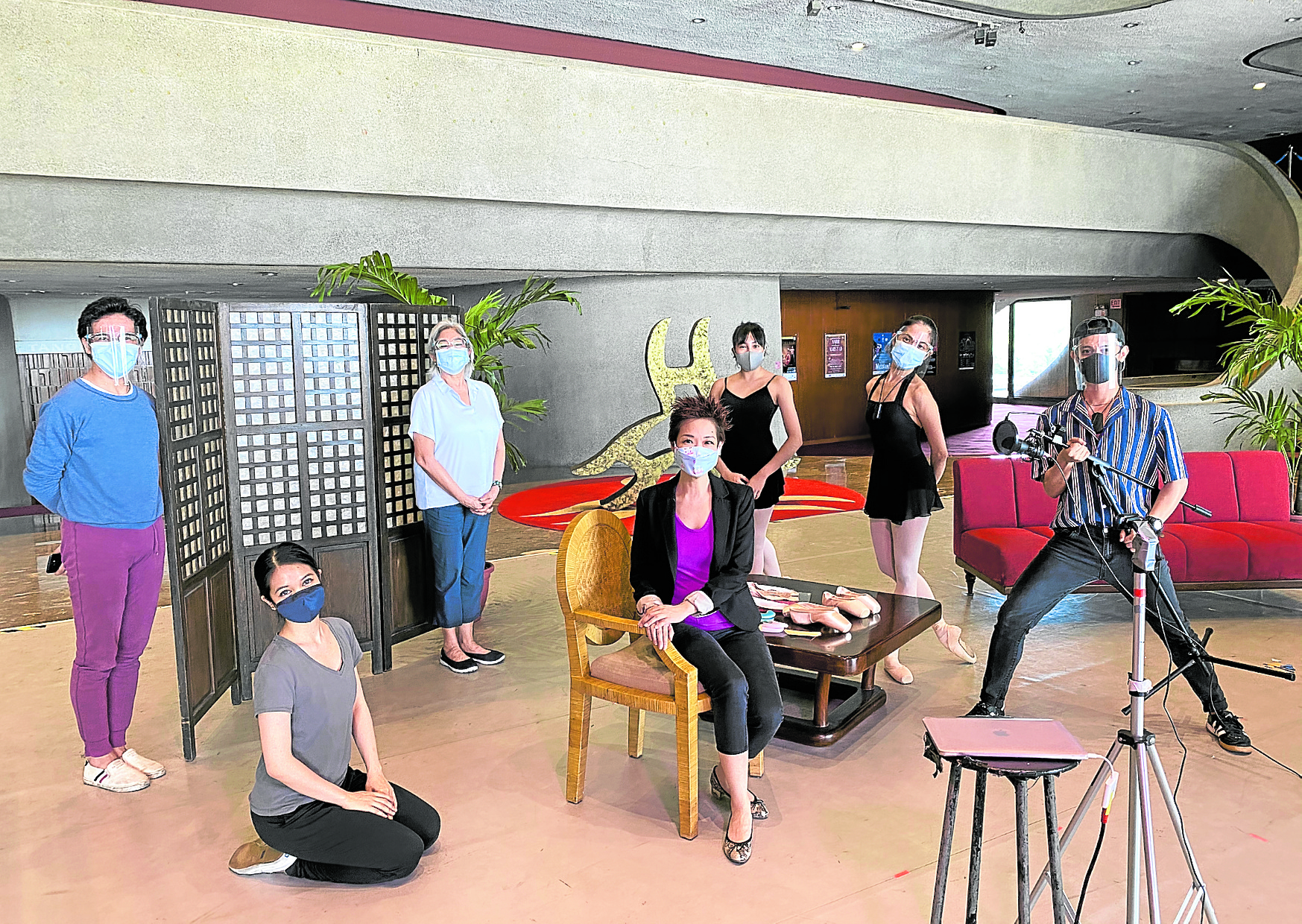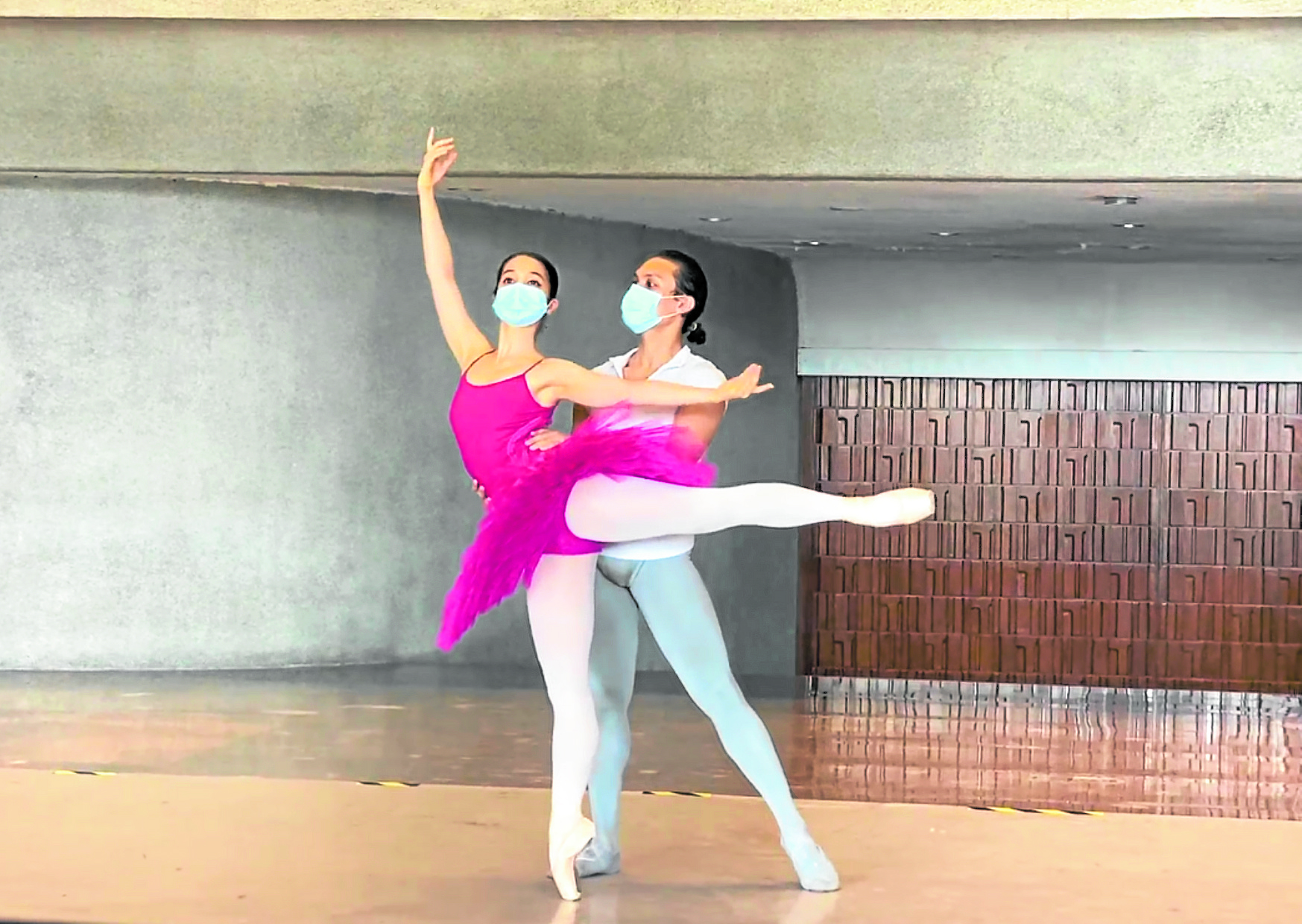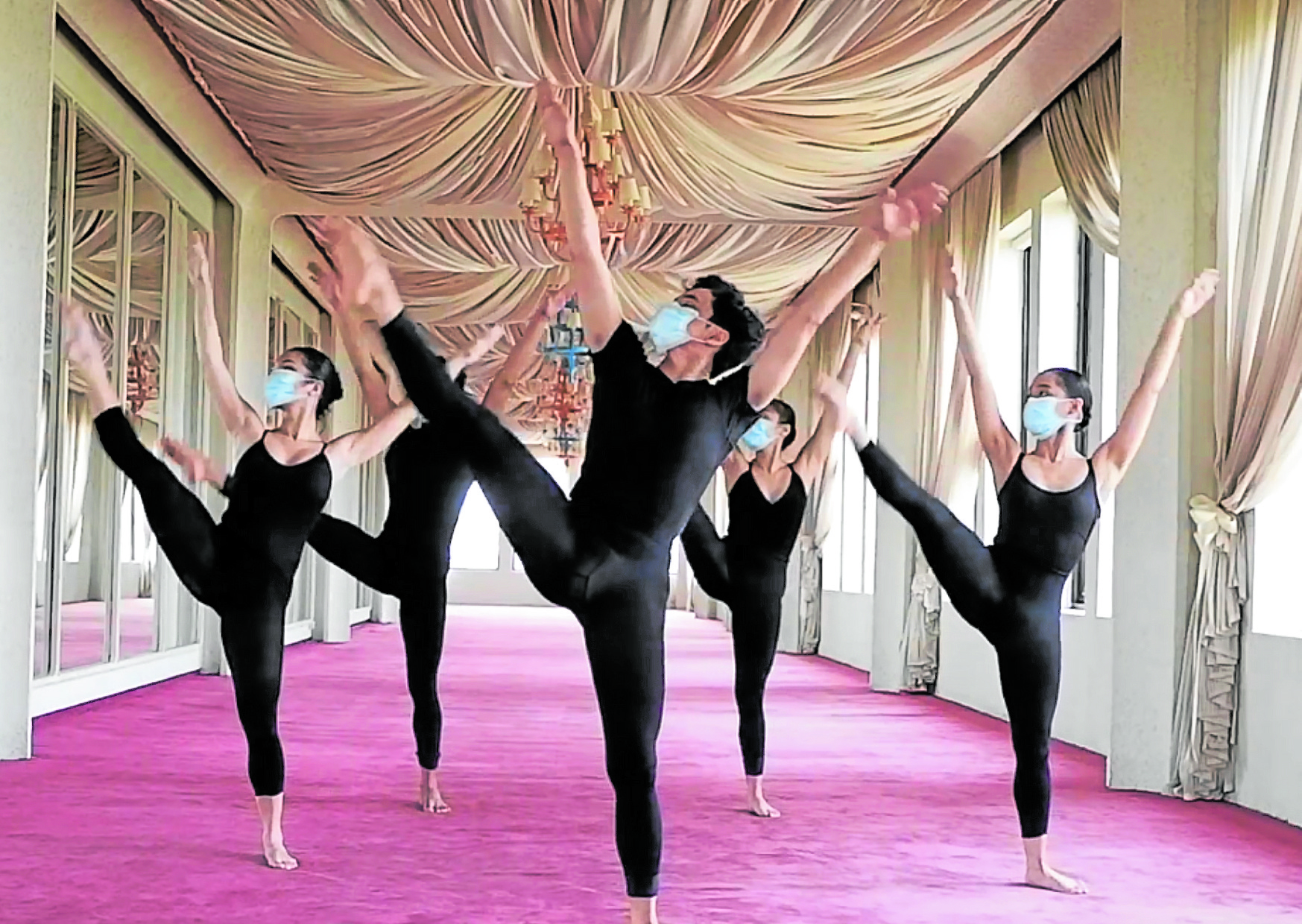National Artist for Dance Alice Reyes can’t stay put. “I’m an essential worker,” she insists.
Reyes, former artistic director of Ballet Philippines (BP), turns 78 Oct 14. She has just recently taken charge of a new dance unit under the auspices of the Cultural Center of the Philippines (CCP).
“This is purely educational,” she says of the CCP Dance Workshop (CCPDW), which gives online classes and lectures. “There is no intent to form a new dance company.”
By the end of BP’s 50th season on March 31, 30 dancers had signed their contracts for the 51st. BP is the CCP’s dance company in residence. However, the extended lockdown and the uncertainty of the pandemic made it difficult for the board of trustees to make plans.
In May, the board suspended operations for six months, upon the advice of the Department of Labor and Employment (Dole). The suspension coincided with the CCP’s closure till year’s end. Although the six-month recess meant no work, no pay, the BP board provided a one-time financial assistance package of P10,000 per person.
The dancers were flustered, to say the least. How could they cover living expenses, let alone continue to help their families?
BP human resource officer Carrie Domingo explains that the board allowed them to work, provided they informed BP beforehand and did not use the company’s name in any way. In Dole terminology, the dancers were placed on “floating status.”

Eventful end
Reyes recalls that in the last months of her term with BP, the dancers learned ithat the board had appointed Mikhail Martynyuk, star of the Kremlin Ballet, to succeed her. They rallied to her side, resisting the prospect of a foreigner as artistic director—this, on top of their growing insecurity about their future with the company.
“I made myself available to all concerned parties for discussions,” Reyes recalls.“The dancers were disturbed. I assured them that when push came to shove, if they lost their contracts, I would help them find sources of income. I thought a few dancers would need that— but not a big group of them, as it turned out.”
Truth was, she had other plans. When her term ended in March, Reyes made a proposal to CCP president and National Commission for Culture and the Arts chair Nick Lizaso to visit the provinces to gauge the potential of developing the dance and culture scenes. “But the pandemic broke,” she says. “All of life changed.”
On their own, the dancers appealed to CCP vice president and artistic director Chris Millado for support. It turned out that the CCP and its arts education department were in the process of putting together CCP Arts Online, which would video-stream lectures and workshops for students, teachers and arts aficionados. In fact, Millado was already organizing the faculty for dance, visual arts, theater and other workshops. The dance unit was named CCP Dance Workshop, coincidentally the name of Reyes’ company in the ’70s before it was rebranded Ballet Philippines.

Virtual program
The virtual program would be under the CCP arts education department, headed by Eva Salvador. The online classes would all fall under the label Sining Galing and be held via Zoom. Participants would be invited by Salvador’s department, and lectures would be streamed live on its Facebook page.
Reyes, mother hen that she was, mediated for her artists in early June. “I had promised to help them; I always try to keep my word,” she recalls. “This led to proposals that fit into the shift from ‘actual’ to ‘virtual,’ and one successful collaboration led to another.”
Sining Galing is now ongoing. The dance series is conducted in four-week phases and includes lectures, and ballet and modern dance classes. The lectures have been highlighting the dancers’ perspectives on a wide range of subjects—ballet history, classical ballet styles, pointe shoes, pantomime, lighting, stage experiences and art therapy.
Recalls Reyes, “In the planning stage, I gave advice when needed, took note of wonderful proposals, suggested directions and helped until their fruition. I reminded everyone to produce quality work—and they all delivered.”
During the summer, the BP board actually planned the 51st season on a digital platform. Domingo reached out to the dancers through email and text messages. Working within a budget, the board could only afford a skeleton force. Since rehearsals would be conducted via Zoom, many of the dancers declined, citing constraints at home, like weak connectivity or lack of space. One of them, Sarah Alejandro, wrote a courtesy letter informing BP that 20 dancers had accepted CCP’s invitation to the virtual arts education program (one would later resign).
The board was not remiss in its obligations, Domingo points out. In fact, she adds, the core BP dancers, the participants in the CCPDW and five seamstresses were given their 13th-month pay in July.

Makeshift studios
Since the onset of the general community quarantine, the CCP Main Lobby has been used as a makeshift dance studio while the rehearsal hall is under repair. The production department covered the marble floor with wood and linoleum to keep impact on the dancers’ joints at a minimum.
Dance classes are also held at the open-air and baby studios. Health protocols are observed, of course: Each class is limited to one teacher and nine dancers who all have to wear masks, the space is sanitized before each class, and the lobby doors are kept open for air circulation. A benefactor, Dr. Happy Mateo, donated an air purifier with a high-efficiency particulate air filter.
“We average 140 classes and lectures a month, given by the CCPDW faculty,” Reyes reports.
Each facet of CCP Arts Online has a separate budget. Contracts are renewed per time cycle. Reyes found outside sources to augment the dancers’ income. “The goal is to get close to what they were earning prequarantine. That shows respect for these artists,” she says. “Aside from CCP and the online classes, they now also receive financial assistance from cooperative friends.”
BP alumni, including Sofia Zobel-Elizalde, lend a hand as well to the 12 production and rank-and-file staff.
No more drama
Giving work to these artists currently in “floating status” has been nothing less than inspiring for Reyes. The new setup has enabled her to discover the dancers’ resourcefulness and organizational skills. Some of them have been creating choreographic studies.
“I’m always developing new choreographers,” says Reyes. “In the past, we’ve had Gener Caringal, Tony Fabella and Edna Vida. Now, in spite of the pandemic, there is still dancing and teaching going on. Do we need any more drama and conflict? This is the time for positive action.”
Asked what the dancers may look forward to at the end of BP’s recess Nov. 14, Domingo says the board has yet to decide the feasibility of returning to normal. “The conditions set by Dole will determine if the suspension will be extended or if operations will resume. As of now, officially, nobody is terminated.”
Reyes resigned from the BP board last season. “Change happens; if you are honest with yourself, you go with the flow—just stay positive and be generous,” she says.
“I feel it’s time for me to move on and embrace my calling as National Artist. I plan to take a trip around the islands and see how dance is faring. I’d like to convince local governments to invest in arts by building their individual cultural centers. It’s not only good business; it’s a matter of regional pride.”
—CONTRIBUTED














































